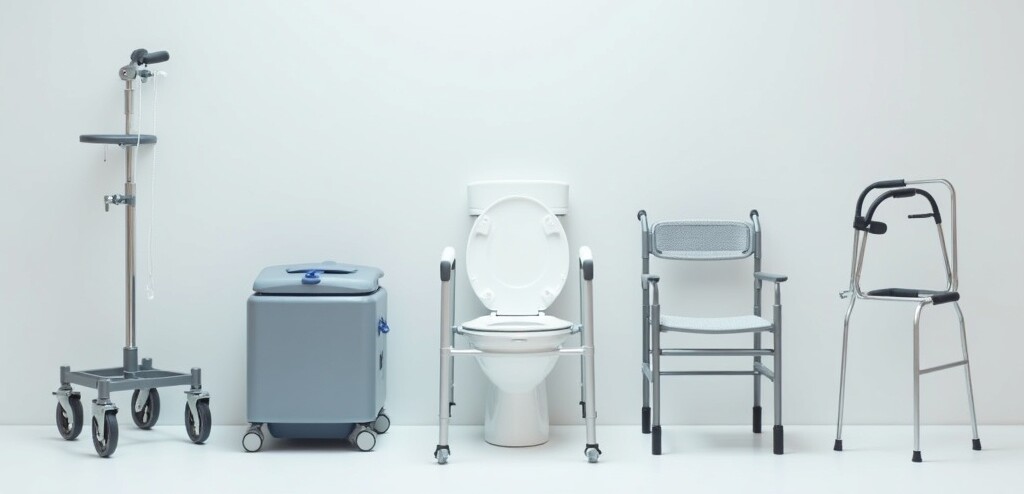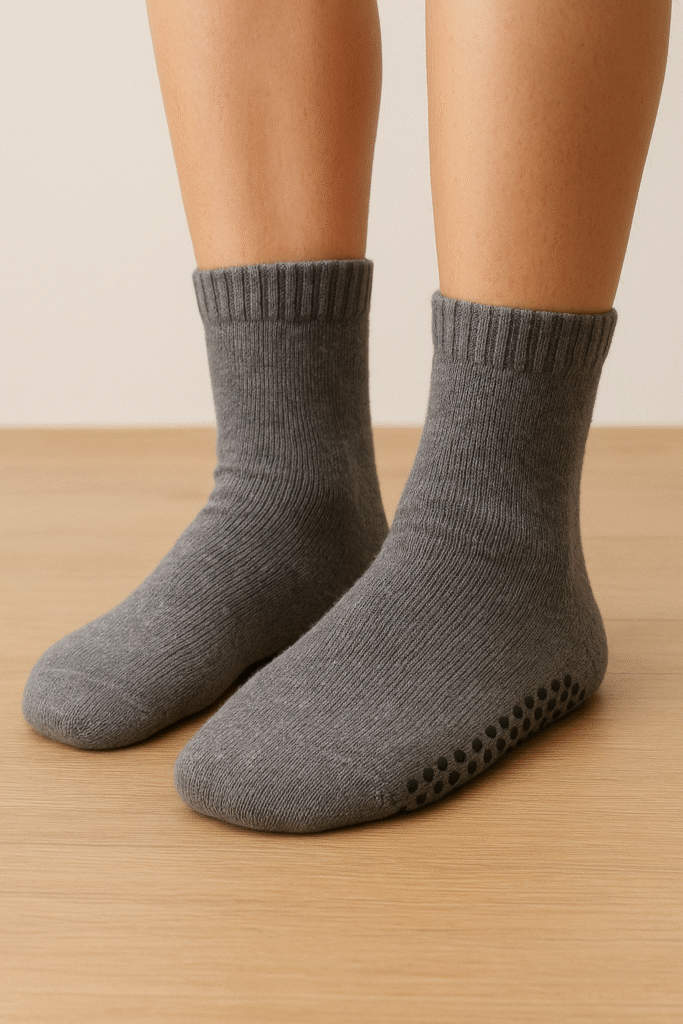According to the UK’s National Health Service, it may take several months or longer to fully recover from a knee replacement. Knee replacement recovery is a vital part of getting back on your feet and enjoying life again. It’s more than just healing physically; it’s about regaining independence and confidence. I had my knee replacement surgery early in 2025 and want to share what worked for me. Everyone’s journey is unique, but understanding the general stages can help set expectations and ease any anxiety.
If you haven’t had your surgery yet, start with this article on how to prepare for knee replacement surgery. After surgery, the healing process begins immediately, but it unfolds in phases. Early days may involve discomfort and limited mobility. As days progress into weeks, moving around becomes easier, and by the time you reach a few months in, many find they’re walking more smoothly and with less pain than before.
Older adults may face specific challenges due to pre-existing health issues or mobility concerns. That’s why it’s important to keep in touch with your healthcare team for personalized guidance. They can offer advice tailored to your specific health needs and help you navigate any bumps in the road.
Adjusting your daily activities is also key. Simple tasks like getting dressed or preparing meals might take more time and effort at first. Embrace the pace that suits your body, and use any tools or support systems available to make the transition smoother. Maintaining flexibility in your routine can enhance your recovery experience.

Essential Tools and Aids for Optimal Knee Rehabilitation
Enhancing your recovery experience often involves using specially designed aids that can make daily activities more manageable. With the right tools, you’re not just easing discomfort; you’re actively promoting healing and improving mobility. Here are 10 recovery aids that I found super helpful and worth researching before you have your procedure:
Click on any heading below for more information.
1. Ice Therapy
Swelling can be a real challenge. An ice therapy machine delivers steady, cold relief directly where you need it without the mess of melting ice packs. These devices recirculate chilly water, and most have simple controls. Using one for twenty minutes several times daily really helped bring down my post-surgery swelling fast. If you can’t get your hands on a machine, large gel ice packs (with fabric covers) are the next best thing.
2. Walker, Crutches or Cane
It’s tough to get moving in those first days without extra support. A sturdy walker gives you balance, reduces stress on your knee, and helps prevent falls. Some people prefer crutches later on, once they’re more comfortable. Most hospitals send you home with a basic walker; I found that adding tennis balls or soft caps to the legs prevents floor scratches and reduces noise. Finally, a walking stick or cane can support balance and fatigue over longer distances in the final stages of healing.
3. Bath Chair or Stool
Lowering into the bathtub or standing in the shower is risky after surgery. An adjustable bath chair gives you somewhere safe to sit while you wash up. This made my first showers after surgery way less stressful and gave me a piece of mind knowing I could get clean safely.
4. Raised Toilet Seat
Getting on and off the toilet is a real workout for your knee, especially with all those bending restrictions. A raised toilet seat bumps up the height and makes sitting or standing much easier. It’s such a simple thing, but trust me, your knees will thank you every time you sit or stand up, especially during the early weeks.
5. Grip Socks or Non-Slip Slippers
Floors at home can be slippery, and you probably don’t want to risk a fall. Grip socks or nonslip slippers keep you stable whether you’re shuffling to the bathroom at night or doing your daily walks around the house. I kept a few pairs in easy-to-reach spots so I wouldn’t forget, especially since I wanted to avoid barefoot slips on hardwood floors.
6. Reacher Tool (Grabber)
Bending over to pick up something you dropped is a no-go after knee surgery. A grabber tool lets you safely pick up socks, shoes, dropped remotes, or anything else on the floor. I found mine super useful and kept using it long after my knee healed. These tools are sometimes called reach extenders and can grab most household items without you having to squat.
7. Pill Organizer
Knee surgery usually means a handful of different meds: painkillers, blood thinners, and more. A pill organizer helps you avoid missed doses or accidental double-ups. I set a phone alarm for each dose, which worked great alongside the organizer. A visible pillbox on your main countertop makes it much easier to stay on track during foggy post-op days.
8. Compression Stockings
Doctors often recommend these after surgery to help with blood flow and reduce swelling. They’re comfortable enough to leave on all day, but if you feel discomfort or itching, double-check the size and fabric, or ask your doctor about your options. Following the instructions from your medical team about how long to wear them is really important for safety.
9. Recliner Riser Chairs
You’ll need somewhere comfortable to rest and recover and it’s ideal if you can combine that with a chair that you can safely stand up from. Reclining riser armchairs are designed to recline, allowing elevation of the legs, and also to gently lift the user to a near-standing position, making sitting down and standing up easier without straining or losing balance. If a recliner riser is not a possibility, then choose a sturdy chair with a firm seat and arms. If your armchair is very low, a traditional dining chair with arms may be suitable, but may not be comfortable for long periods.
10. Surgical Recovery Travel Kits
There comes a time after your surgery when you will feel ready to travel, but may still be healing and need the reassurance of the post-surgery aids that you have been using. If you have been using a cryo machine for cooling, having a couple of portable gel ice packs is great for controlling pain on the go. Pair these with a wedge or contoured knee pillow to keep your leg propped up comfortably during rest periods in hotel rooms. Most walking sticks or canes are lightweight and many can be folded and easily stored for travel. Ensuring that your hosts (be it family, friends, airlines, inns or hotels) are aware of your needs will make your travel much less stressful and help you to get that much needed relaxation.

Creating a Safe and Comfortable Recovery Environment at Home
Setting up your home to be safe and comfy is a key step in recovery. It means fewer obstacles and easier movement as you heal. Adjustments create an environment where you can focus on getting better without extra stress.
Start with accessibility. Rearranging furniture to create wide, clear paths can make a world of difference. Ensure that rooms are well-lit, with light switches or remote controls accessible without stretching or reaching.
Consider investing in useful fixtures like bed rails or grab bars for additional support. These can provide stability when you get in and out of bed or use the bathroom, reducing risk of falls.
Fall prevention deserves special attention. Loose rugs should be removed or secured, and clutter minimized. Even small changes like securing electrical cords and placing non-slip mats in bathrooms can enhance safety.
Meal prep can become another area where changes help. Placing frequently used items within easy reach can reduce unnecessary bending or reaching. Consider enlisting the help of family for shopping and preparation to maintain a healthy diet without overexertion. Pre-freeze meals beforehand if you can.
Your recovery space influences not only physical comfort but mental well-being too. Take care to create an environment that feels welcoming and supportive, encouraging you to stick with your rehabilitation exercises and recovery milestones.
Support Systems: Leveraging Friends, Family, and Community Resources
Recovering from knee replacement surgery isn’t just a physical journey—having a solid support system makes all the difference. Friends and family play a big role in helping you navigate everyday tasks and provide vital emotional support.
It’s important to communicate your needs clearly and involve them in your recovery plan. Whether it’s giving you a lift to healthcare appointments or simply spending some quality time together, their involvement can be comforting and motivating.
Knowing when to seek professional help is also crucial. Hiring a physical therapist for guidance on exercises, or a nurse for wound care, can be beneficial. They bring expertise that fosters a smoother, more effective recovery process.
Community resources offer incredible support. Many areas have local and online support groups for older adults going through similar experiences. Sharing insights and encouragement with others can be powerful and reassuring.
Consider tapping into senior centers or local organizations that offer programs tailored to those recovering from surgery. These centers often provide exercise classes, social events, and other activities designed to promote healing and social interaction.
Building a strong, supportive community around you boosts both your physical recovery and emotional well-being. It reminds you that you’re not alone on your journey back to health.
